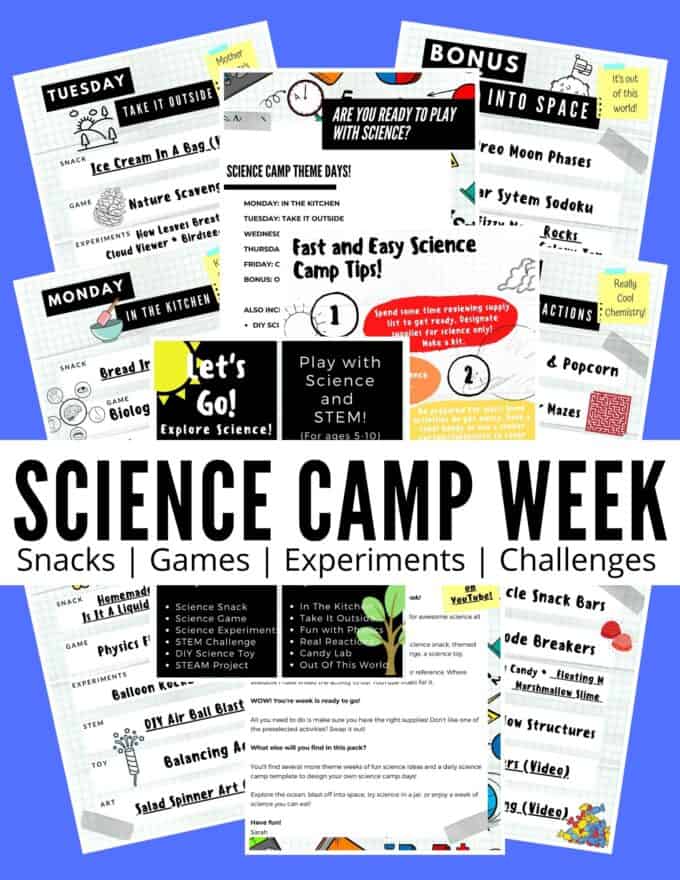Real fireworks may be unsafe to handle, but fireworks in a jar are the best! Celebrate the 4th of July, or any time of the year with a fun science experiment, and try out this easy food coloring science project that uses just a few simple kitchen supplies. Everyone will love exploring homemade fireworks in a jar for the holidays! Best of all, no loud noises! We love simple science experiments for kids!
HOW TO MAKE FIREWORKS IN A JAR
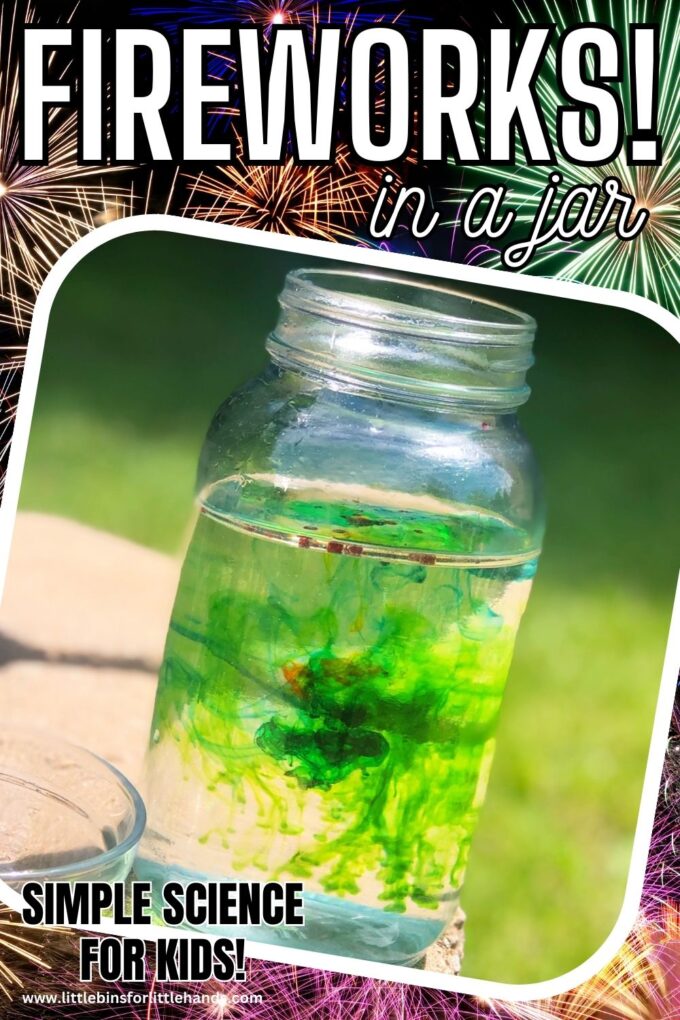
Homemade Fireworks for Kids
Add this simple fireworks-in-a-jar activity to your 4th of July or summer science lesson plans this season. How about a New Year’s Eve activity too? Let’s dig in if you want to learn how to set up fireworks in a jar. While you’re at it, check out these other fun 4th of July activities.
Our science activities and experiments are designed with you, the parent or teacher, in mind! Easy to set up, and quick to do, most activities take only 15 to 30 minutes to complete, and are tons of fun! Plus, our supplies lists usually contain only free or cheap materials you can source from home!
Fireworks in a Jar
Let’s learn how to make fireworks in a jar for simple summer science and the 4th of July celebrations. Head to the kitchen, open the pantry, and grab the supplies. What are you waiting for if you haven’t assembled a homemade science kit yet?
This fireworks experiment asks What happens when oil and water mix?
YOU WILL NEED:
- Warm water
- Liquid food coloring (4 colors)
- Vegetable oil
- Tablespoon
- Large mason jar
- Small glass jar or bowl
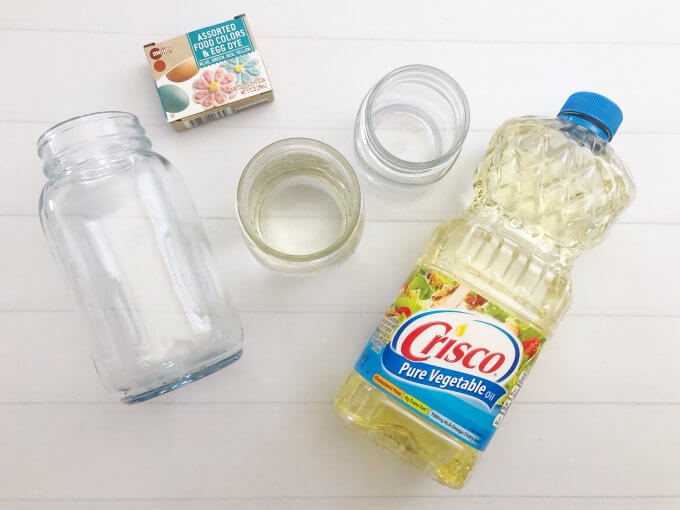
While you are at it, why not set up these fun 4th of July science activities too!
- Fizzy 4th of July Eruptions
- Easy Homemade 4th of July Slime
- Red, White, and Blue Skittles Experiment
- Toothpick Stars Experiment
HOW TO MAKE FIREWORKS IN A JAR:
1. Fill a large mason jar 3/4 way full with warm water.
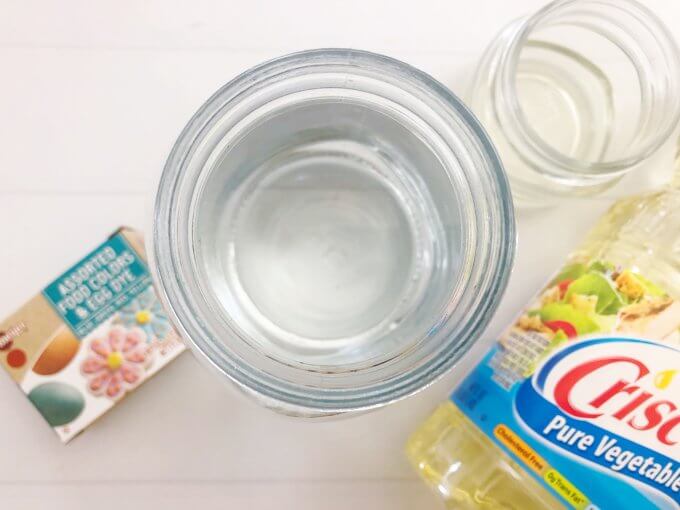
2. In a small glass bowl, add 4 tablespoons of vegetable oil and 4 drops of each color food coloring. Use a spoon or fork to slowly mix around the drops of food coloring to break them up into tinier droplets. Read on to find out why the oil and food coloring won’t mix.

3. Slowly and carefully pour the food coloring and oil mixture on top of the water.
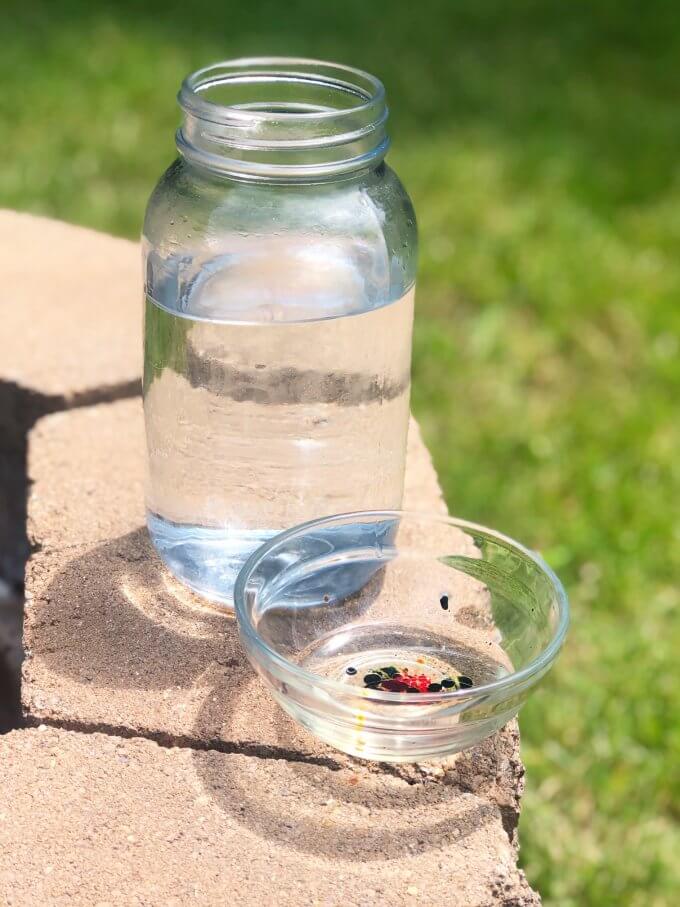
4. Watch the jar to see what happens.

FIREWORKS IN A JAR VARIATIONS
What else can you do with this fun oil and water experiment to get the kids thinking?
>>> Mix several colors in one jar, or use one jar per color! You can also have the kids experiment with cold water and observe any changes to the fireworks.
>>> You can also add another element to this activity with Alka Seltzer-style tablets and turn them into a homemade lava lamp seen here.
Oil and Water Science
Liquid density is a fun experiment for kids to explore as it combines physics and chemistry! As you observed above with your fireworks in a jar, oil and water do not mix. But why don’t oil and water mix if they are both liquids?
Liquids can have different weights or densities because of their molecular structure. Water is heavier than oil, so it sinks because it is made up of a different amount of molecules.
Food coloring (the easy-to-find kind from the grocery store is water-based) dissolves in water but not in oil. This is how the drops and oil remain separated in the container. As you pour the container of oil and colored droplets into the jar of oil, the colored drops will begin to sink because they are heavier than the oil. Once they reach the water in the jar, they start to dissolve in the water, and this makes the fireworks in a jar.
Fun Fact: Adding the food coloring to the oil, slows down the water and food coloring mixing!
Does the temperature of the water affect what happens to the fireworks in a jar?
More Oil and Water Experiments to Try
- Liquid Density Tower
- Homemade Lava Lamp
- Why Do Sharks Float?
- What Dissolves In Water?
- Oil an Water Science (Fish Theme)
- Ocean Waves in a Bottle
Printable “Done-for-You” Science Camp!
Not only will you get all the quick theme weeks with complete instructions and templates, but this done-for-you Science Camp Bundle also includes a fully detailed science camp week with science-themed make-and-takes, snacks, and games each day. Each day is a different theme!



